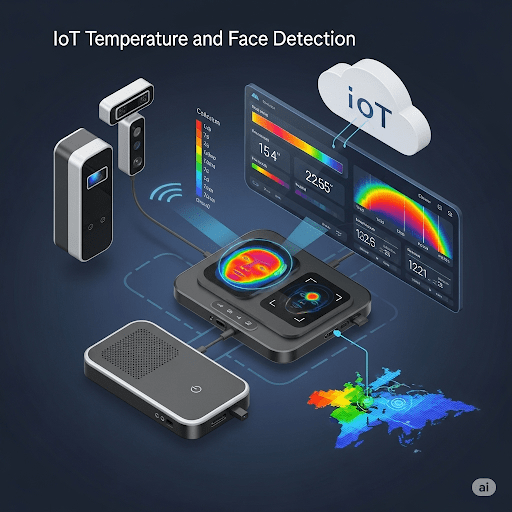Smart Dustbin for Clean City IOT Based Project

In the modern era of smart technology, efficient waste management is a significant concern, particularly in urban areas. This project introduces an innovative smart dustbin system designed to enhance hygiene, convenience, and efficiency in waste disposal. The core of the system is an ESP8266 microcontroller, which manages the entire operation and facilitates connectivity to the cloud for real-time monitoring. The smart dustbin utilizes an ultrasonic sensor to detect the presence of a person and determine the level of waste inside the bin. When a person approaches, the sensor triggers the servo motor to automatically open the lid, ensuring a touch-free experience. Once the person moves away, the lid closes, minimizing the risk of contamination and promoting better hygiene.
The smart dustbin is also equipped with a buzzer that provides auditory feedback during the lid's opening and closing operations. This feature ensures that users are aware of the dustbin's actions, enhancing the overall user experience. The ultrasonic sensor continuously monitors the waste level inside the bin. When the bin reaches its full capacity, the system sends a notification to the cloud, which can be accessed by users through a web interface. This real-time data allows users to monitor the dustbin's status remotely, ensuring timely waste disposal and preventing overflow, which can lead to unsanitary conditions.

The integration of the ESP8266 microcontroller with cloud connectivity offers significant advantages in terms of remote monitoring and management. Users can receive alerts on their devices, view the fill level of multiple dustbins in different locations, and plan waste collection schedules more effectively. This smart dustbin system not only improves the efficiency of waste management but also contributes to a cleaner and healthier environment. By leveraging modern technology, this project aims to provide a practical solution to urban waste disposal challenges and promote sustainable living practices.
Related project idea for free
Water usage prediction using automated home garden watering system
The automatic systems are more chosen than manual system. Smart watering system in garden is the combination of several hardware equipment and software applications that trigger the water usage with respect to the given threshold. This IoT system maintains proper usage of water used in home garde...
Read more>>IoT-Based system for monitoring health conditions of eldery people in Rwanda
The rapid increase in number of the old adults in developed countries has raised concerns about their well-being and increased needs for healthcare services. Elderly people faces different oldage related diseases such as Cancer, Alzheimer, cardiovascular, blood pressure and sugar level problems w...
Read more>>IoT Based Customer Satisfaction Machine
As high satisfaction leads to greater customer retention, higher lifetime value, and a stronger brand reputation. Do companies or institutions have a good way to know if their customers are satisfied or not. Poor customer service can affect the present and future sales standards, it can also nega...
Read more>>TEMPERATURE AND FACE DETECTION SYSTEM
The measured amount of heat in a place or in the body is called temperature whereas face is the front of the head, where the eyes, nose and mouth are. By using face detection, you can recognize someone’s identification. Temperature can be used as the sign of change in human bod...
Read more>>Vehicle collision avoidance IOT system
Driver-assistance systems called collision avoidance systems, sometimes known as crash avoidance systems, use sensors and algorithms to identify possible hazards or obstructions and issue alerts to the driver to help prevent a collision. A collision avoidance system is a type of safety device used t...
Read more>>




